FUNDAMENTALS A Complete Guide for Beginners

Synaptic is a graphical package manager that provides the same features as apt-get and apt is used in Debian-based Linux distributions like Ubuntu, Linux Mint, and Debian.Synaptic works on the top of the apt or apt-get.The users who are comfortable with the graphical interface mainly use Synaptic package manager. In this article, I will show how the user can mainly install, remove, and handle the software with Synaptic efficiently.
What is Synaptic package manager in Linux?
The synaptic package manager is a lightweight graphical user interface, so users find it very easy to use and for that reason, it is very user-friendly. If you start with synaptic you will see the window. Here I have shown the window components:
| Component | Description |
|---|---|
| Menubar | Use to perform the action in Synaptic. |
| Toolbar | Provides the main actions which include the properties, search, mark all upgrades, and reload. |
| Status bar | Shows the global status of the package manager. |
| Category sector | Categories the list of packages and narrows the window. |
| Package List | List all the packages divided into sections. |
The Key Components of Synaptic
The users who use the package manager for the first time should know about the key components of Synaptic. Here I have shown the modules:
- Usage: Graphical front-end of apt and used in Debian and Debian-based Linux distribution.
- File extension: The file extension the synaptic package manager manages is .deb files.
- Key Features: Install, Remove, and upgrade packages, User-friendly, Mainly used by those who prefer a graphical user interface.
Features of Synaptic Package Manager
Synaptic is the combination of apt-get and GUI. Here are some key features that Synaptic Package Manager provides:
- Install, remove, and upgrade specific, and multiple packages.
- Provide force installation of a specific package.
- Perform smart upgrades.
- Lock a specific version of the package.
- Can show all the online packages while searching.
- Search for a Package.
- Show the information of a package.
- Fix the broken dependencies of a package.
- Manage the repositories.
- Download the changelog.
- Show the list of all packages by section, status, and custom filters.
Below I will show examples of the features that will help you to use the package manager properly.
How to Install Synaptic Package Manager on Ubuntu
Synaptic Package Manager does not come by default. So you have to install it with apt or apt-get. To install Synaptic you can copy this command:
sudo apt install synapticThe image shows that the synaptic package manager has been successfully installed on the system.
How to Use Synaptic Package Manager?
First, you have to launch the synaptic package manager to further work and for that, you can copy the following command on Ubuntu:
sudo synapticAfter running the command, the package manager will be launched.
Install Software With Synaptic Package Manager
The common function of any package manager is to install a package that shows variety in installation. In this section, I have shown how you can install the package with Synaptic.
A. How to Install a Specific Package Using Synaptic
Once you successfully launch the package manager, then the following window will open. To install a package with Synaptic first you can see the search bar at the right corner of the window.
After clicking the search button, it will show a small box on which you type the package name that you want to install. Once you type the package name press the search button.
It will show all the packages related to the searched package. From the packages, you can choose a package, right-click on this, and then press the mark for Installation.
Once you press the key it will ask you to make additional changes by marking the other required packages to install.
After marking the additional packages press the apply button as I have shown on the image.
Review the changes and then press the apply button on the bottom right of the window.
Once the installation has been completed, you have to press the close button.
B. How to Force the Installation of a Package Version
Sometimes one needs to install a specific package version on the installed higher version of the package. To do so, you need to select a package, and then click on the package icon on the toolbar.
From the image, you can see it will show another window and you have to press the force version. Once you click on the force version it will show the following bar as I have shown in the following image.
Now you have to click the bar and you will see the versions.
Once you select the version as I have shown in the above image click on the bottom right on the force version button.
Sometimes you will not see the force version option for a specific package. When the package has only one version then it will be not shown.
Remove Software With Synaptic Package Manager
Sometimes you install a package but you do not need the file later. So you can uninstall or remove it with the remove option. In this section, I have shown how to remove a single package and unnecessary packages with Synaptic on Ubuntu:
1. How to Remove a Specific Package Using Synaptic
You can choose a package and then right-click on it to remove it. So a window will be shown and from the window, you have to select the mark for removal option. To remove a specific package using Synaptic, check the following steps:
From the image, you can see I have removed the package with the mark for removal option. I have shown some other options in the image. If you want to delete or remove a package with the configuration file or purge the package then you can use the mark for complete Removal option. Again if a package is installed with broken dependencies or unmet with the dependencies then you can use the mark for reinstallation option.
After choosing the option you have to press the apply option to save the changes.
2. How to Purge a Package in Linux
If you want to delete a package with its configuration file then you can use the mark for Complete Removal option. So to purge a package in Linux, check the following steps:
If you click on the button it will ask you to review and apply for the following changes.
So to remove a package you have to click on the apply button as I have shown you in the image.
Upgrade Packages With Synaptic
With Synaptic you can upgrade the specific package and also the whole system. In this section, I have shown how one can upgrade the system:
A. Upgrade a Specific Package in Linux
If you want to upgrade a specific package then click on the status button first. I will show you all the installed packages and also installed upgradable packages. Now you choose a package according to your liking. Right-click on the package and press the mark for upgrade button. Check the steps in the image below to update a specific package using synaptic:
So by doing this, you can install a specific package.
B. Upgrade the Whole System Using Synaptic
If you want to upgrade the whole system then you click on the reload button on the toolbar which will update to the latest versions. Then click the mark all upgrades button for a smart upgrade.
To make the additional changes press the mark button and then apply.
By doing this you can able to upgrade the whole system. By upgrading all the packages you can update the cached packages as well.
Lock a Package Version With Synaptic Package Manager
If you want to lock a version of a specific package then you have to choose the package first. Right-click on the package and it will show the lock version option. So, press the lock version option to lock a package version with Synaptic:
By doing this it will lock the version and not upgrade the package when you upgrade the system.
How to Get Information Related to a Package
If you want to know package information then choose a package and right-click on the package. It will show you a window and from the window click on the properties option.
The properties option will show a dialog box that contains all the information about the package.
In the information panel, you can choose any other option to see the dependencies and installed packages.
Search and Filter the List of Available Packages in Linux
If you want to locate or search for a package then you have to click on the search button and type the package name in the find box.
If you want to use the filter option then you can search for filters and it will show the filters on your system.
Again to show all the filters you can press the settings option it will show you the filters option and click on the filter button. It will open a new window.
From the window, you can see the current, marked, and other filters.
One can easily add or delete filters by pressing the new and delete button.
How to Fix Broken Package Dependencies With Synaptic
If there are any broken dependencies then you can fix the package. First You have to click on the custom filter option and then you have to click on the broken button. This will open all the broken dependencies. If you have no broken dependencies it will be not shown.
If there are broken dependencies then you have to right-click on the package and then click the mark for reinstallation button. So by doing this, you can be able to fix the broken dependencies issue.
List Packages by Section, Status, and Origin
If you want to list all the packages then click on the status option.
After clicking the status button you will be able to see the list of all packages, installed packages, upgradable packages, and the packages that are not installed.
So by clicking on each option on the left side, you can see the list of packages.
Manage Package Repositories With Synaptic Package Manager
To manage a repository with Synaptic which includes adding the repository to the list, and enabling and disabling the repository you can see the following steps:
1. Adding a Repository in Linux
To add the repository first click on the settings option and it will show you the repositories.
By clicking the repository option, it will show the following software & update option. From the software update window go to the other software option and click on it. It will open a box where you have to add the URL for adding it on the repo source.
From the image, you can see I have added a URL link to include it in the repository. If you press the add source button then it will add the new repository.
From the above image, you can see the repositories have been added which add the main and source repos, and then close the window.
2. Enable the Repository With Synaptic
To enable the repository you have to go to the software & updates and other software options. Now check the repository that you want to enable.
I have checked the recently added repositories to enable it. Press the close option after checking the repository.
Once you close the window, you will be asked to reload the system to save all the changes.
3. Disable the Repository
To disable any repository, you have to uncheck the repository. And then press the close option.
Once you disable a repository you have to reload the system again to save the changes.
Download the Latest Changelog of a Package
To download the changelog you have to select a package and then go to the package option on the toolbar. If you click on the package option then it will show you the download changelog option. Press that option to download the latest changelog.
How to Remove Synaptic Package Manager
If you want to remove or uninstall the package manager when you do need it then use the following command on Ubuntu:
sudo apt remove synaptic- remove: Remove the desired package from the repository.
- synaptic: The package that I want to remove.
From the image, you can see the package manager has been removed. So you can install and remove the synaptic package manager according to your needs.
Conclusion
In this article, I have tried to describe how synaptic functions, and some useful examples to manage the packages efficiently. Considering how difficult to learn to use a package manager for beginners I tried to keep it as simple as I could. So after reading this article, you will be able to use Synaptic properly and manage the system.
People Also Ask
Related Articles
- How to Use DNF Package Manager in Linux [A Complete Guide]
- How to Use Yum Package Manager in RHEL [A Total Guide]
- A Total Guide on RPM Package Manager in Linux
- Apt Package Manager [A Complete Guide on How to Use it]
- Pacman Package Manager in Linux [How to Use It]
<< Go Back to Package Manager Examples | Package Management in Linux | Learn Linux Basics


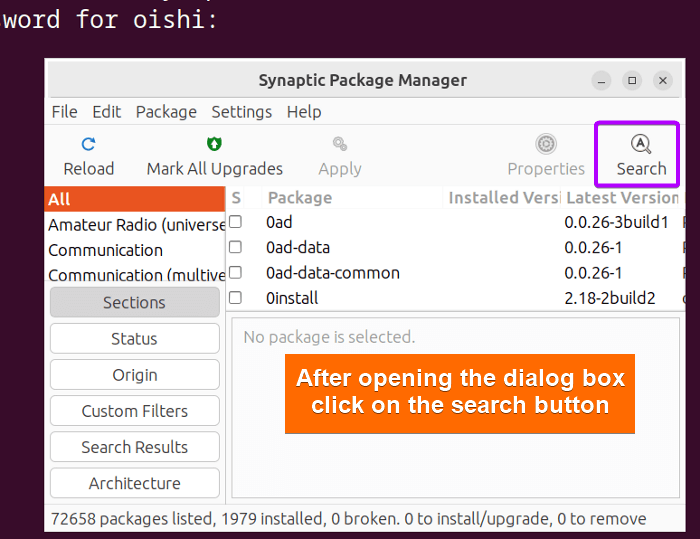
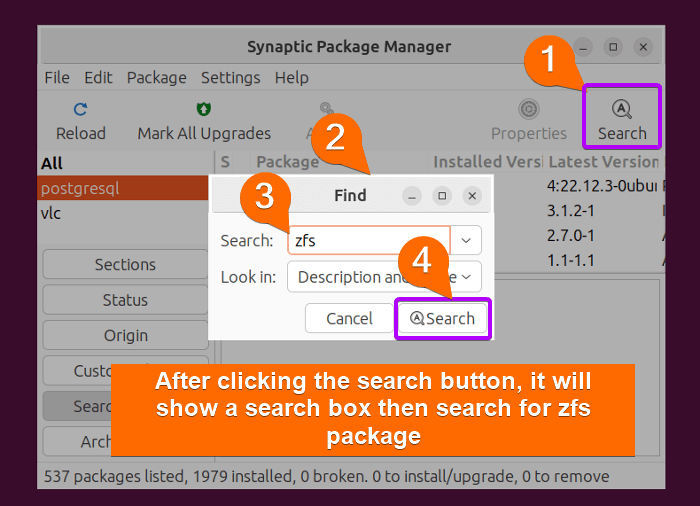
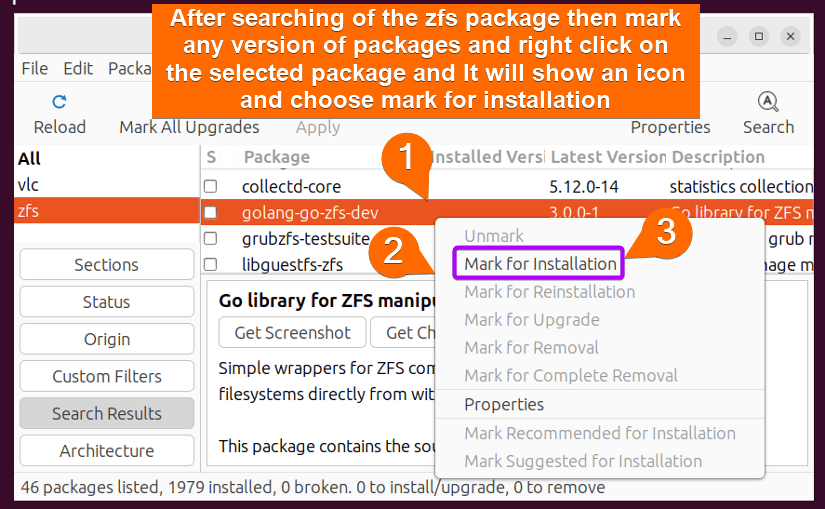
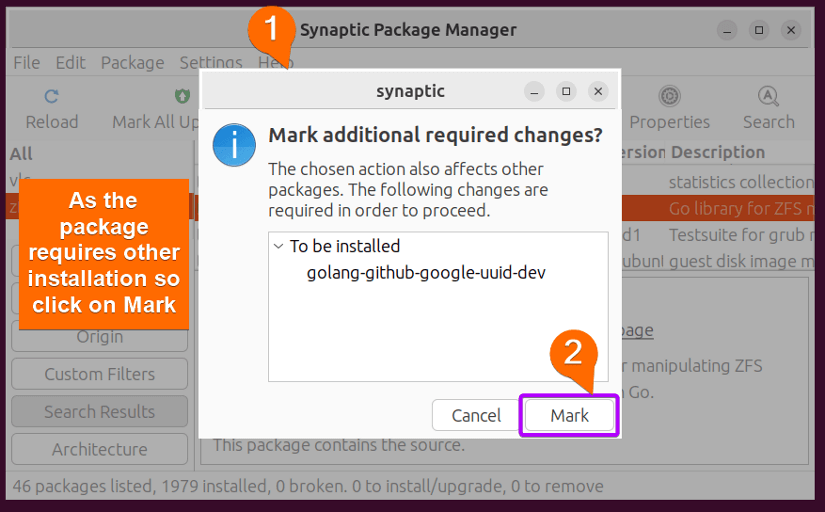
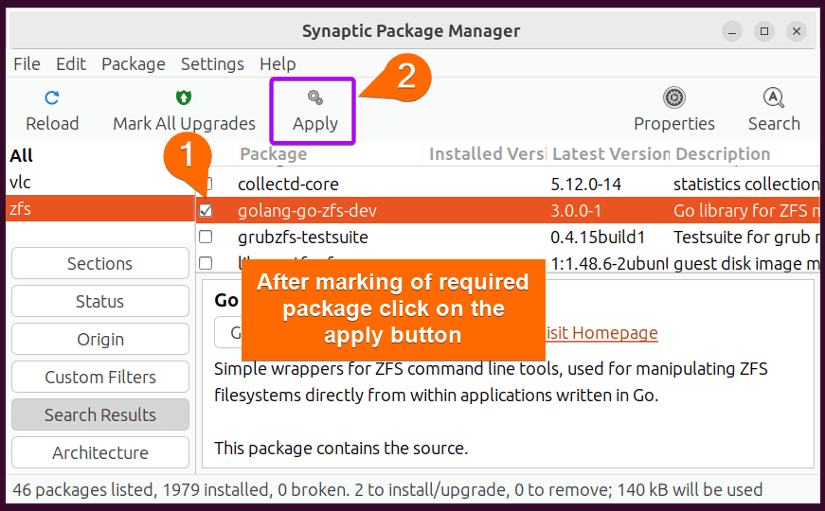
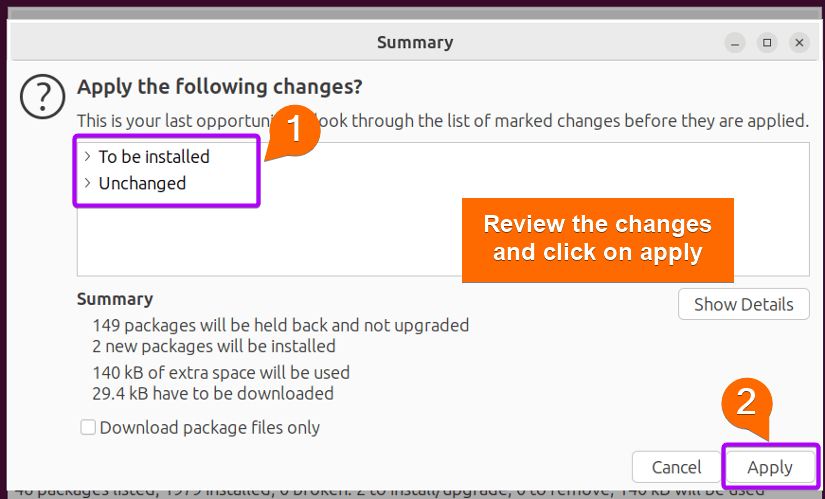
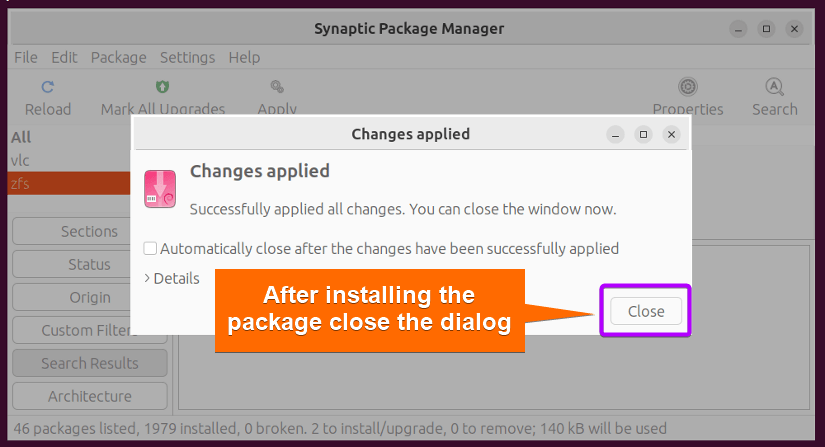
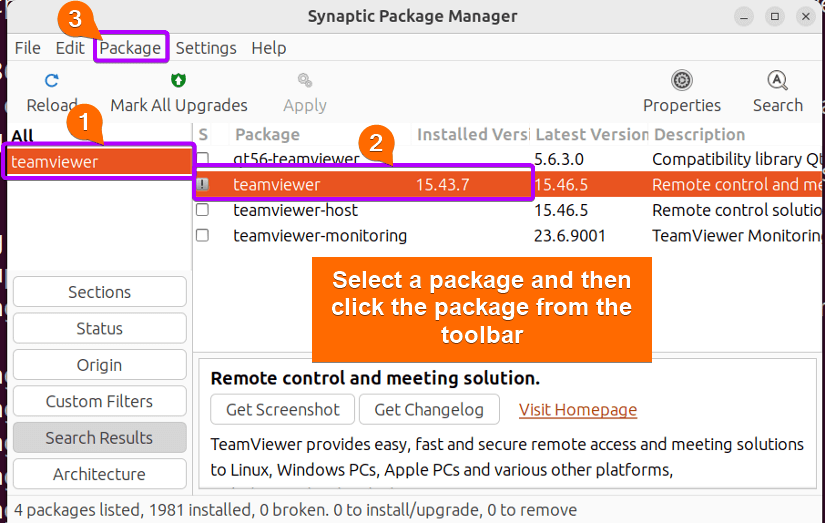
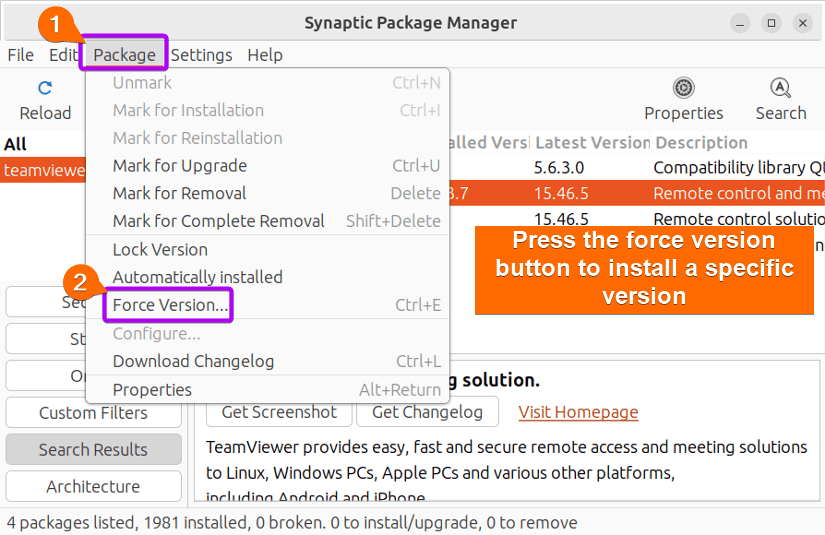

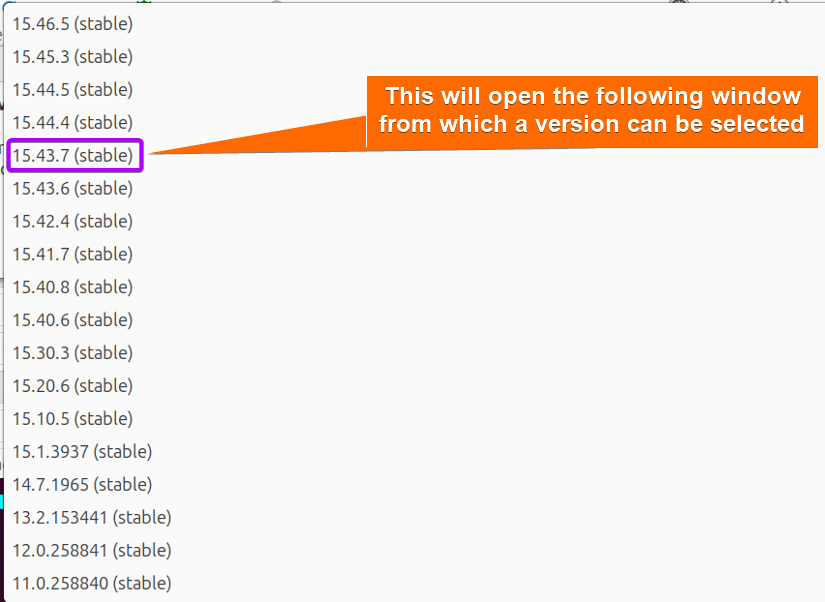


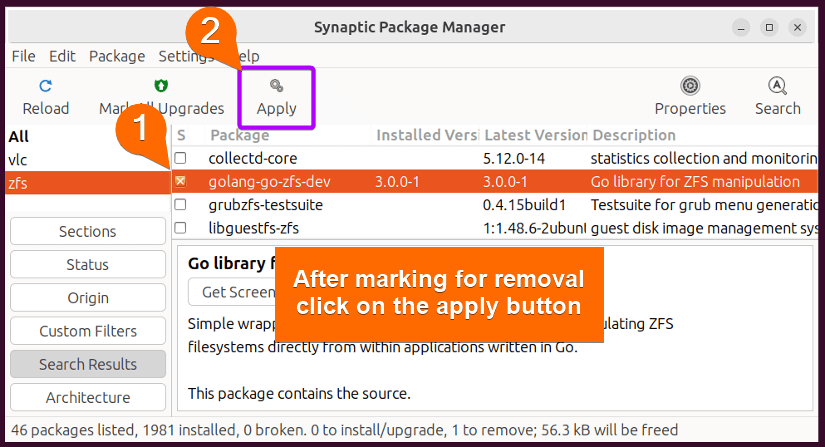
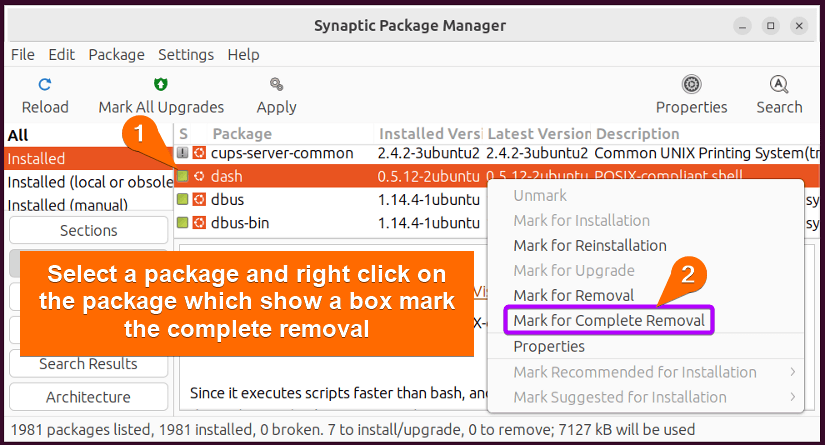

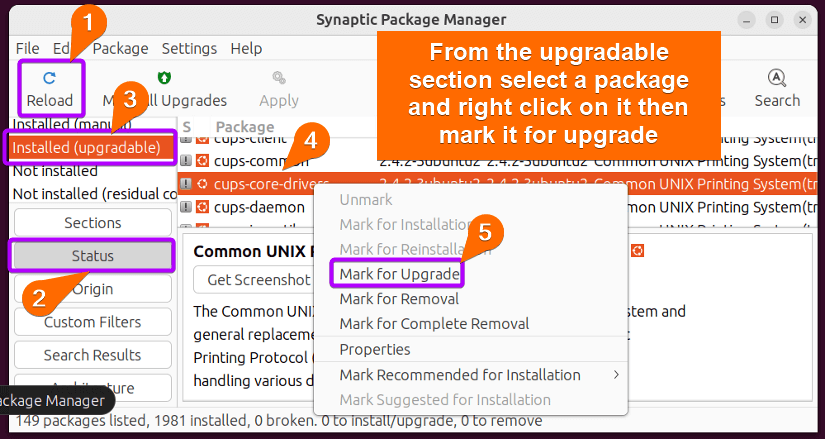
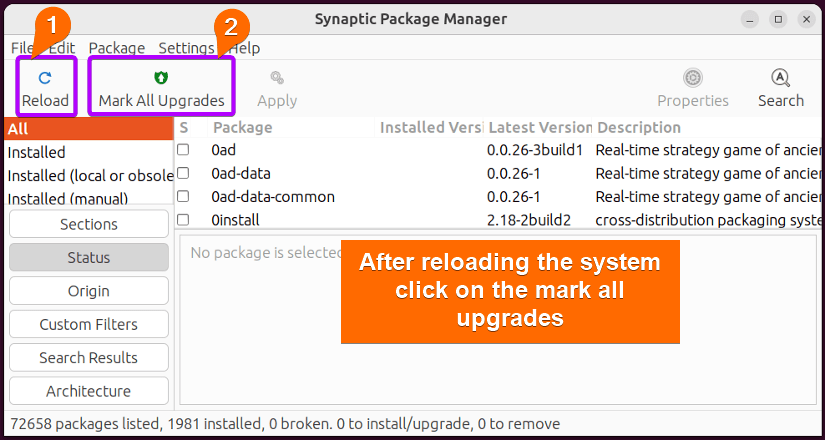
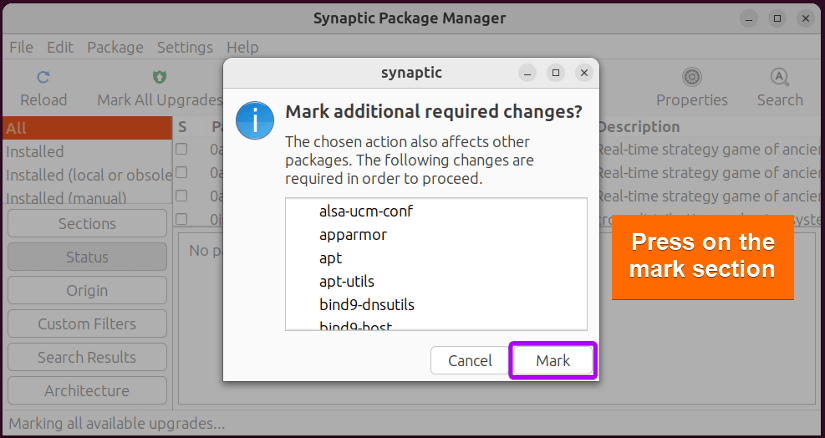
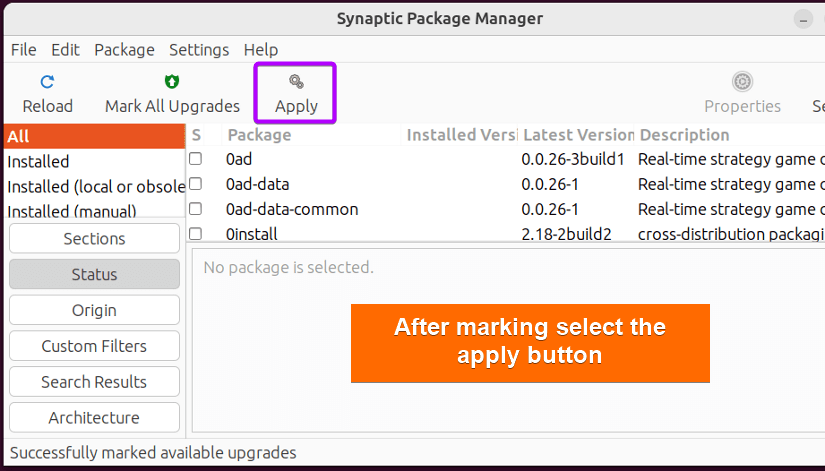
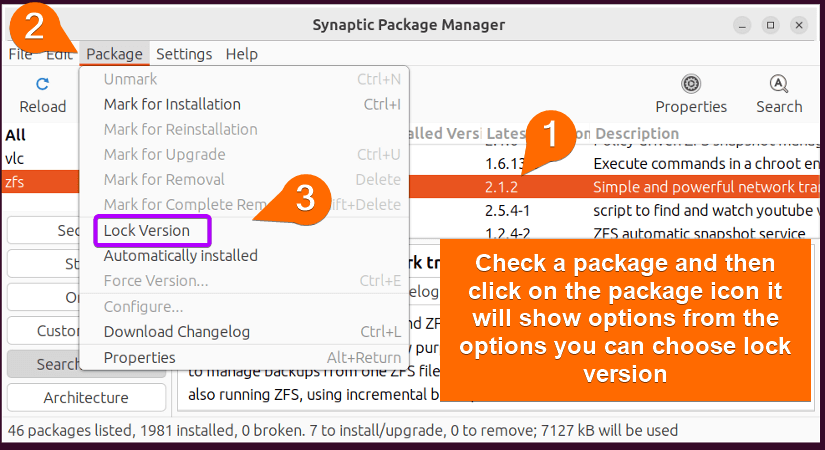
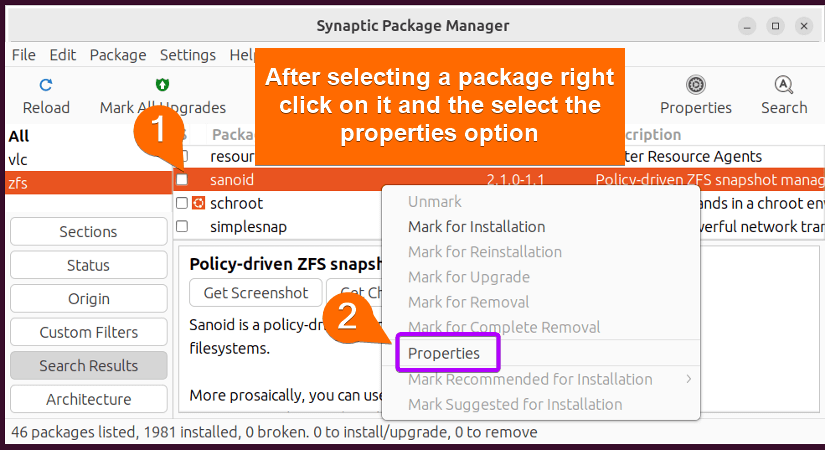
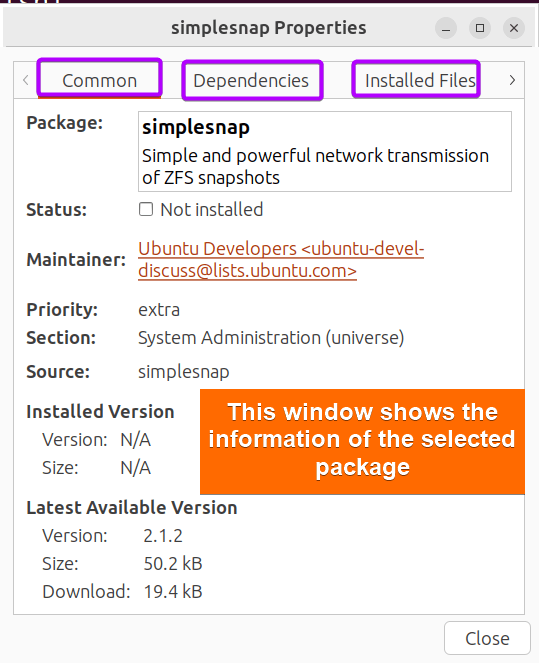
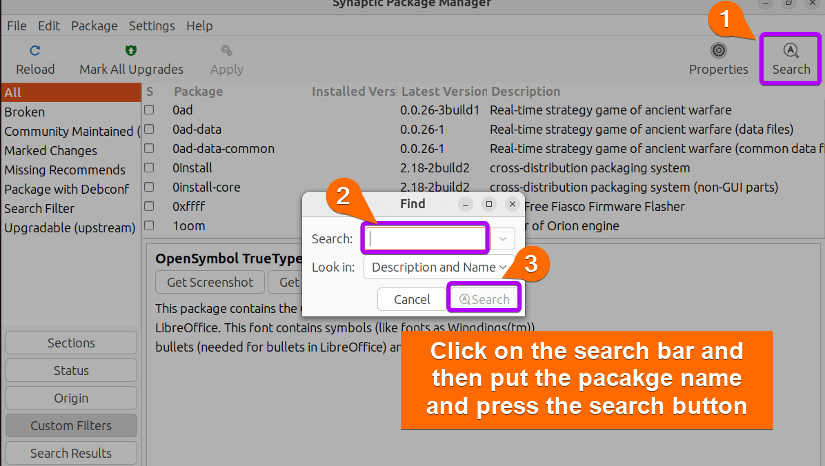
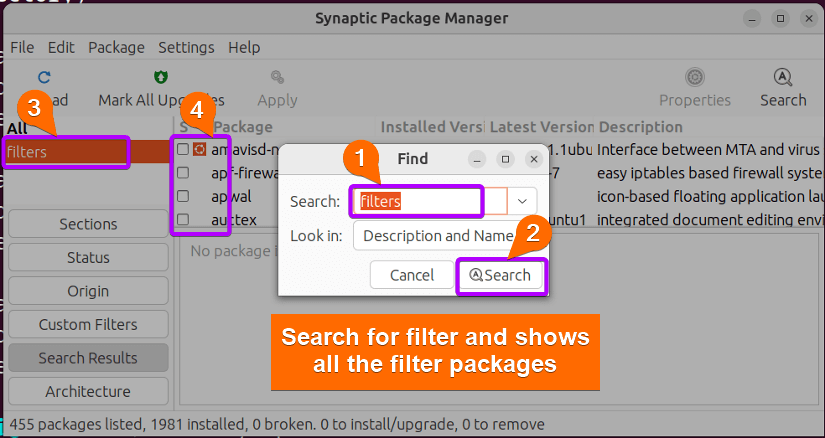
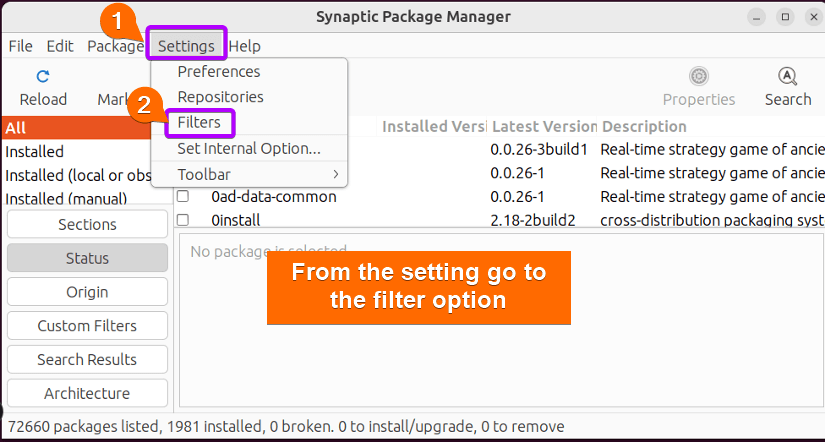
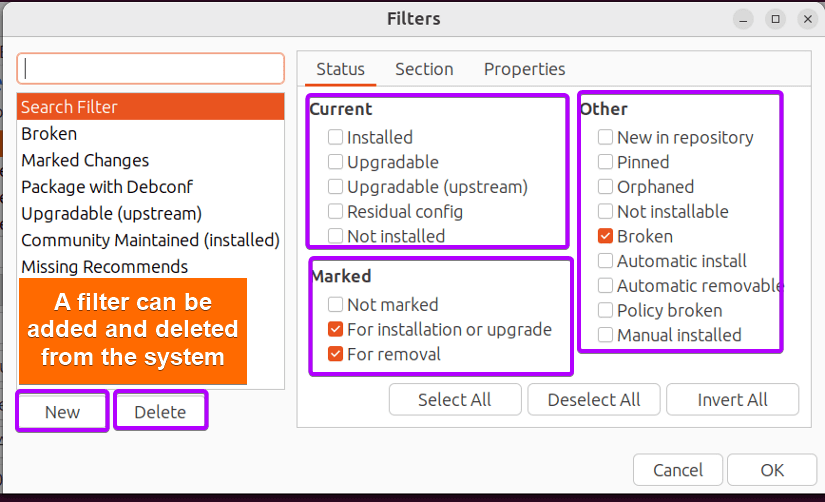
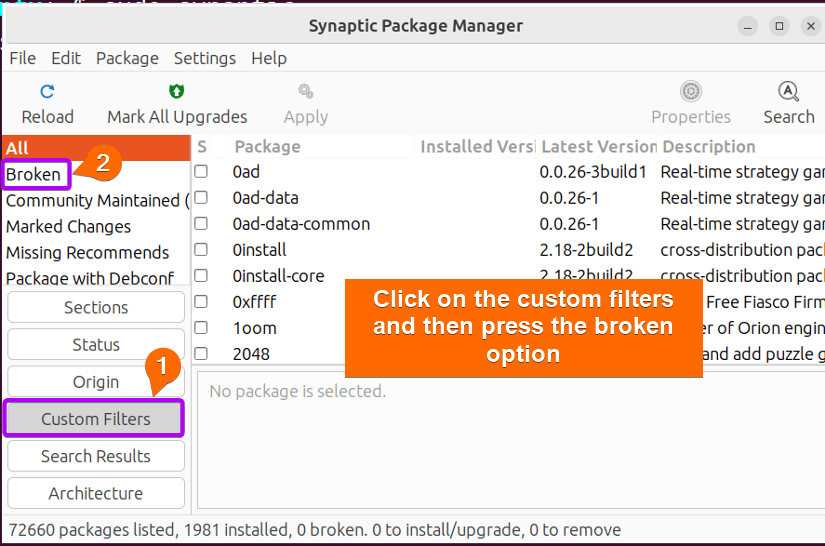
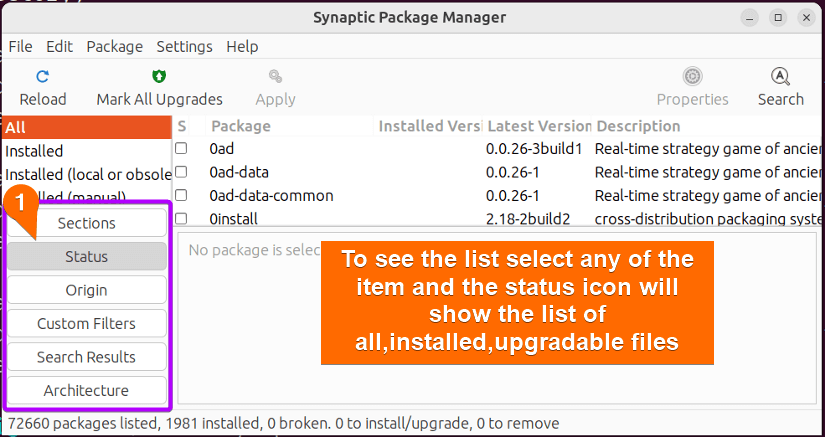
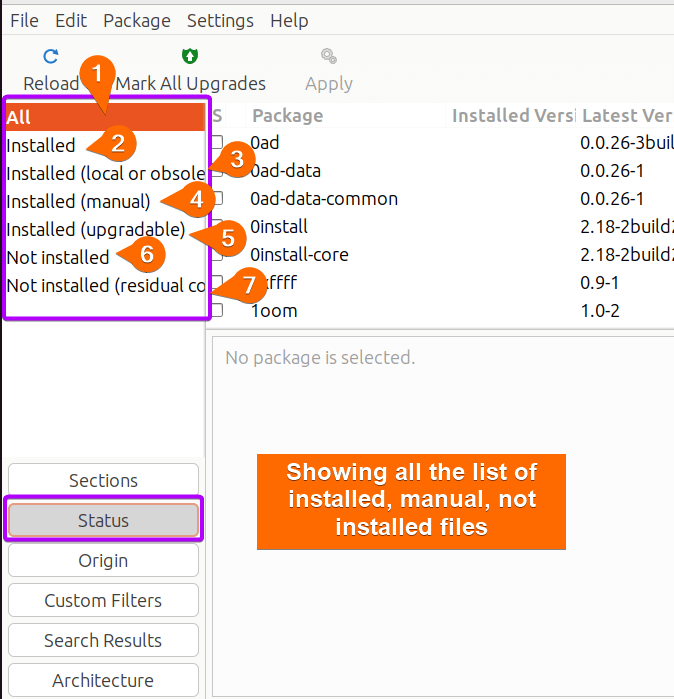
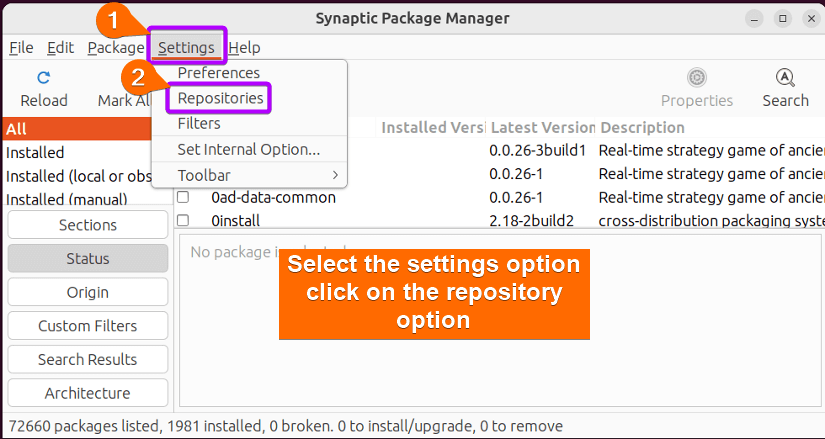
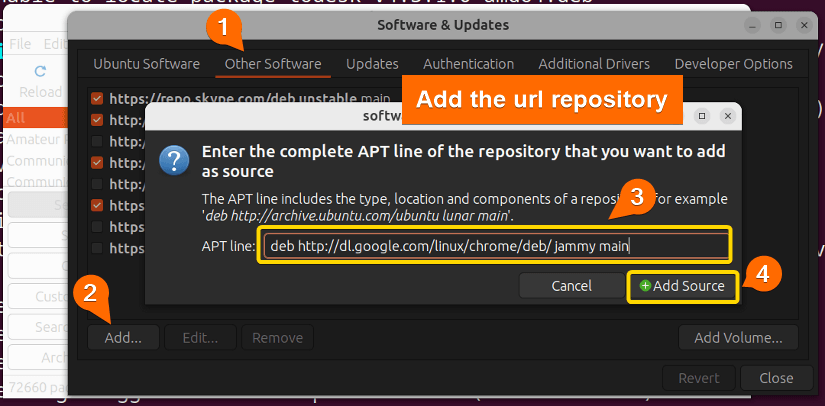
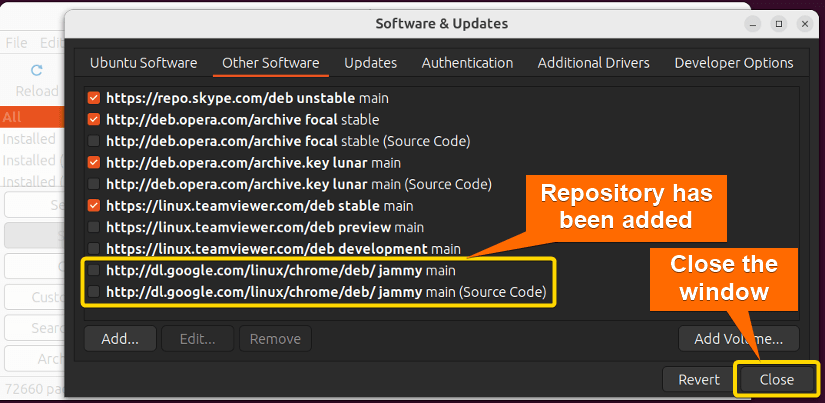
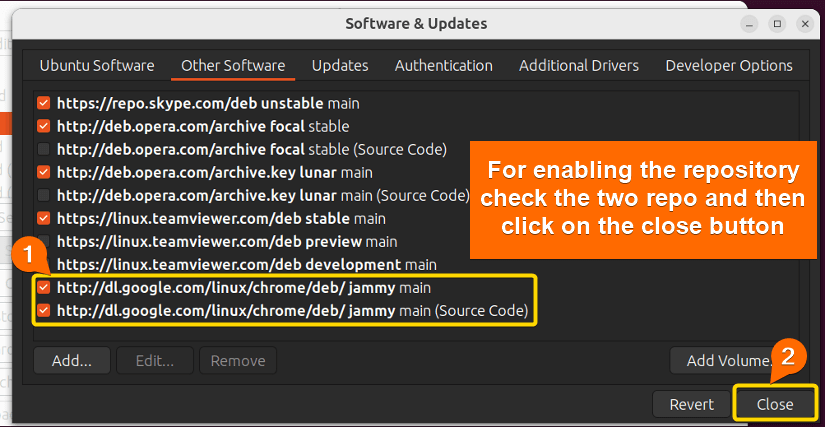

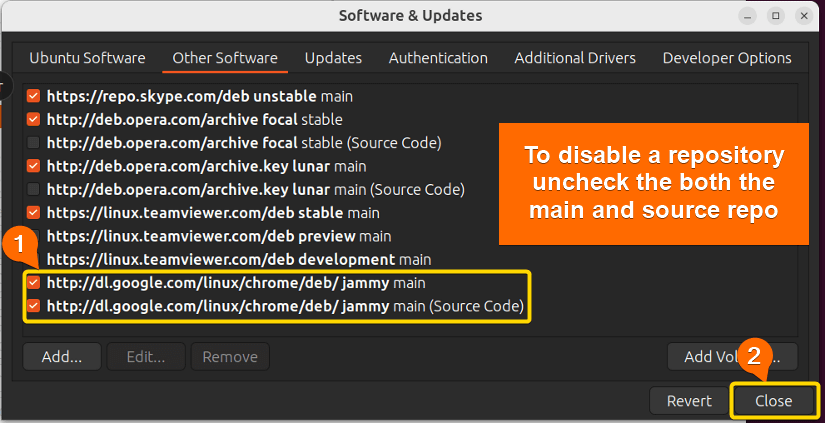
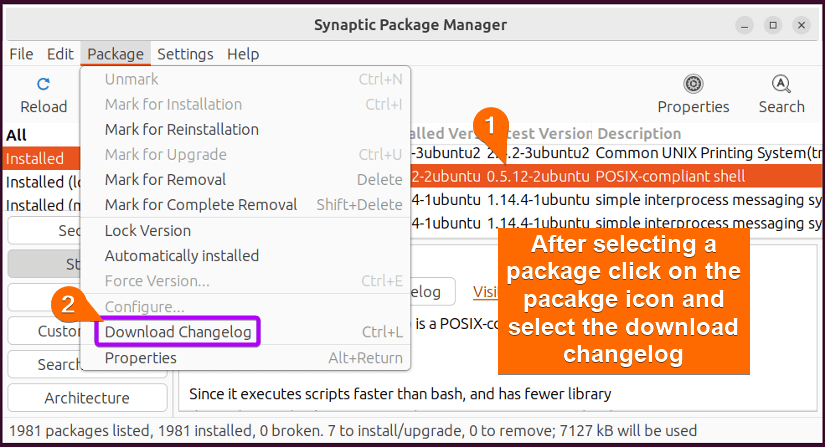
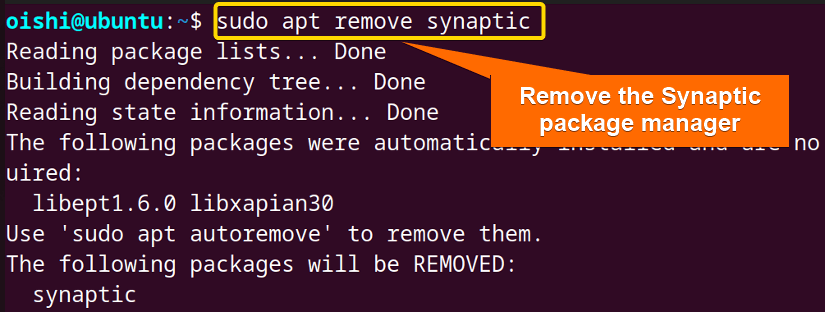




Good article, thank you! Search operators like “sim + phone” (without quotes) also work (v.0.90.2).